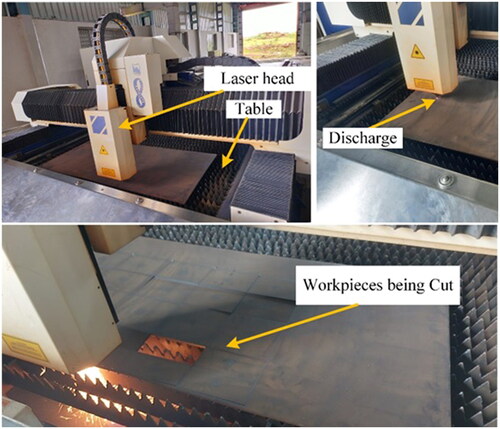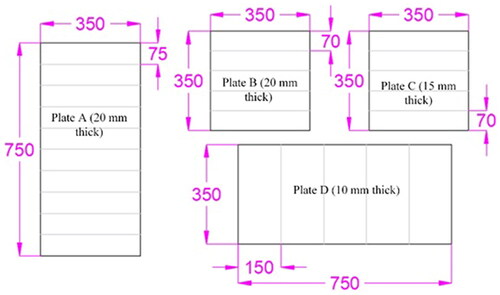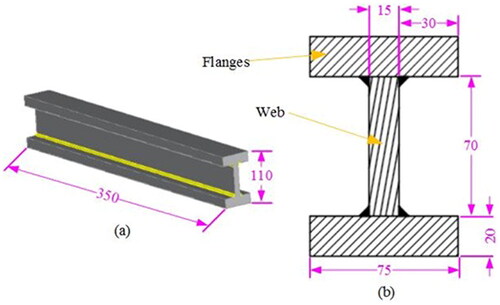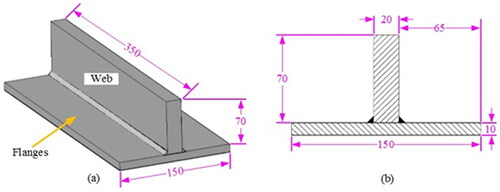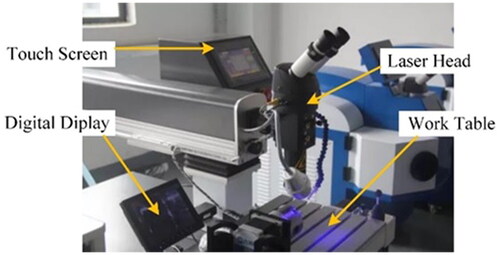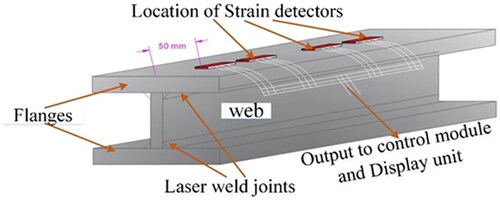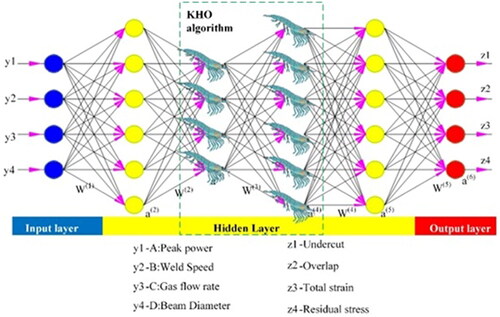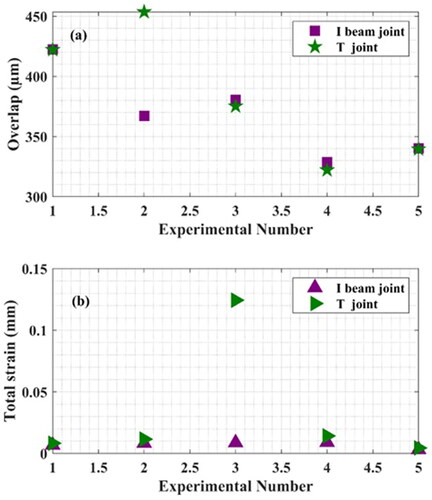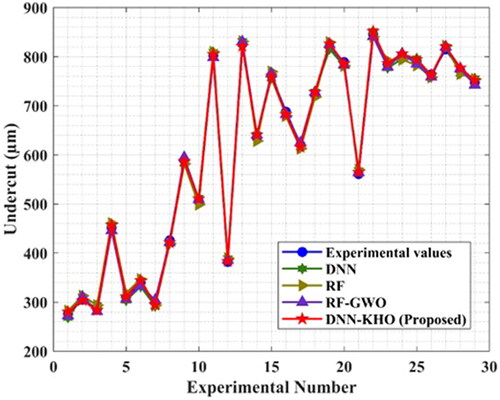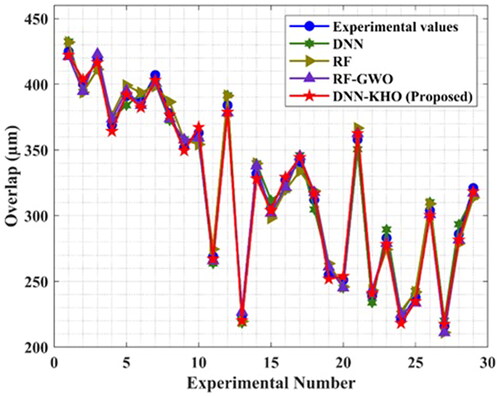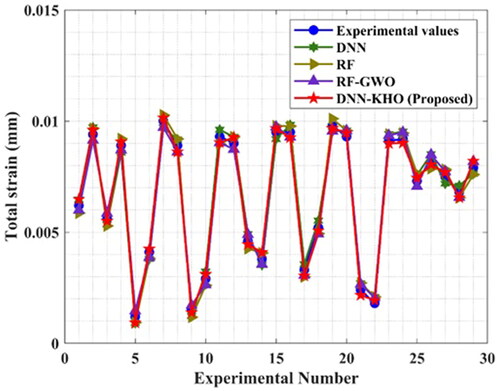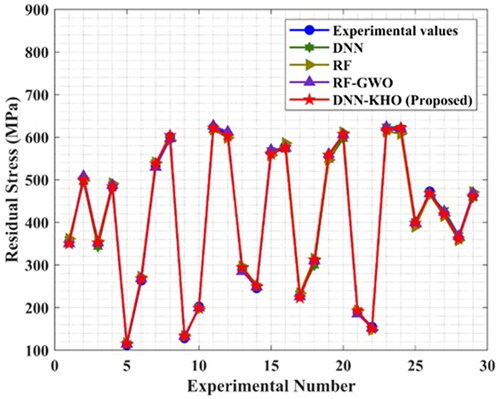Figures & data
Table 1. Physical properties of ASTM A302 alloy steel.
Table 2. Thermal properties of ASTM A302 alloy steel.
Table 3. Chemical composition of ASTM A302 alloy steel (grade B).
Table 4. Argon gas properties.
Table 5. HAN*S LASER PB300 manufacturer specifications and features.
Table 6. Range of input parameters.
Figure 7. Weld bead geometry and strain measurements: (a) Wiki Scanner inspection device and (b) strain detector attachment to the workpiece.
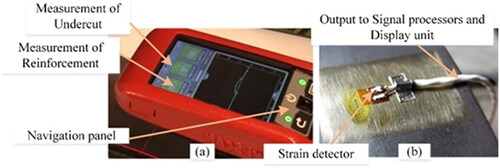
Table 7. Experimental results.
Table 8. RSM predicted results.
Table 9. ANOVA analysis undercut/overlap.
Table 10. ANOVA analysis residual stress/total strain.
Table 11. FIT statistics.
Figure 11. RSM surface plot-undercut: (a) beam diameter, gas flow rate, undercut, (b) beam diameter, weld speed, undercut, (c) peak power, weld speed, undercut, (d) peak power, gas flow rate, undercut, (e) weld speed, gas flow rate, undercut and (f) peak power, beam diameter, undercut.
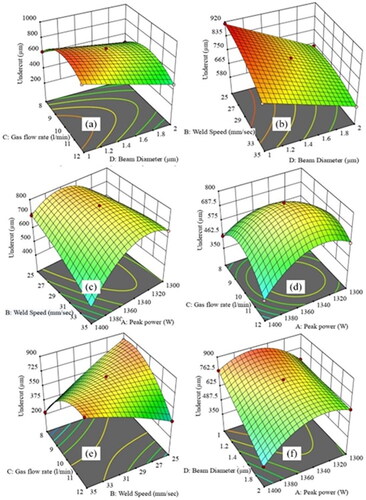
Figure 12. Response surface plot–overlap: (a) weld speed, peak power, overlap, (b) beam diameter, peak power, overlap, (c) gas flow rate, peak power, overlap, (d) weld speed, beam diameter, overlap, (e) gas flow rate, beam diameter, overlap and (f) weld speed, gas flow rate, overlap.
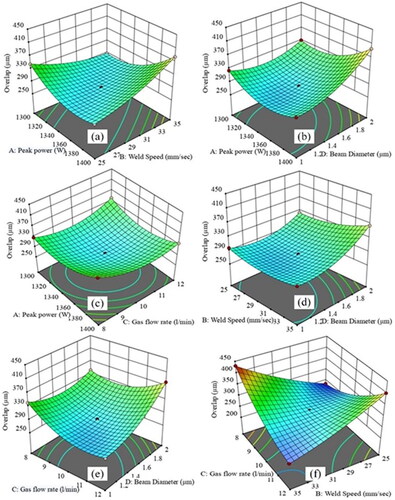
Figure 13. Response surface plot—total strain: (a) beam diameter, peak power, total strain, (b) weld speed, gas flow rate, total strain, (c) gas flow rate, beam diameter, total strain, (d) peak power, weld speed, total strain, (e) peak power, gas flow rate, total strain and (f) weld speed, beam diameter, total strain.
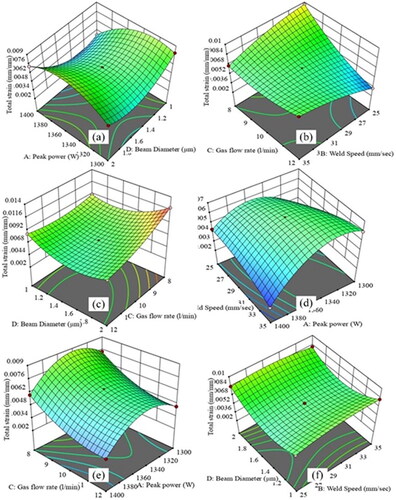
Figure 14. Response surface plot—residual stress. (a) Peak power, weld speed, residual stress, (b) peak power, gas flow rate, residual stress, (c) peak power, beam diameters, residual stress, (d) weld speed, beam diameters, residual stress, (e) weld speed, gas flow rate, residual stress and (f) gas flow rate, beam diameter, residual stress.

Figure 15. Perturbation plots. (a) Total strain (mm/mm), (b) overlap (µm), (c) undercut (µm) and (d) residual stress (MPa).
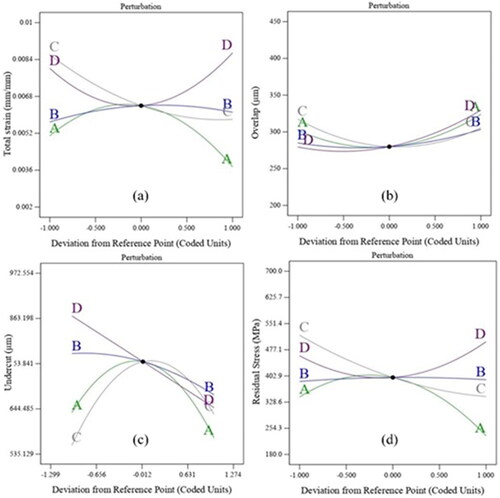
Figure 20. Root mean square (RMSE) analysis for (a) undercut, (b) overlap, (c) total strain and (d) residual stress.
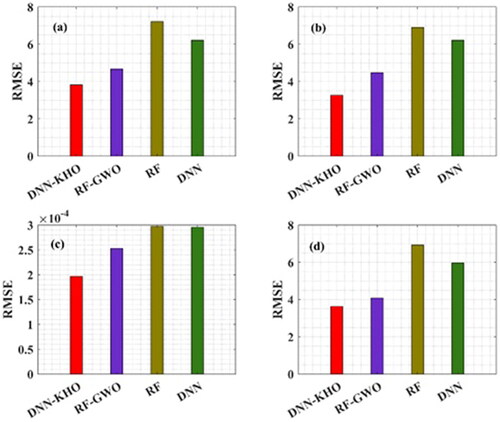
Table 12. LBW optimized process parameters.
Data availability statement
Data sharing do not apply to this article.


